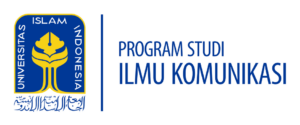Seeing the Social Reality of the Past through the Newspaper
Discussion at the Amir Effendi Siregar Forum (AES Forum) # 14 on October 17, 2020, began to converge on micro history discussions. The forum, which was initiated by PSDMA NADIM Communications at the Islamic University of Indonesia, tries to see how history uses newspapers to see social reality.
This discussion is still related to the previous discussion expressed by Rianne Subijanto regarding the development of historical studies. Rianne said that in the 1970-1980s historians criticized studies that looked solely at the history of great people or great tragedies. The role of the little people (read: ordinary people) and daily events are never taken into account.
The Center for Alternative Media Studies and Documentation (PSDMA) of NADIM, UII Communication Science Study Program, collaborated with Eunike Gloria Setiadarma to present her research using the perspective of ordinary people to see the historical dynamics and socio-political realities at that time. To be precise, Eunike used the writings of Kwee Thiam Tjing (KTT) and his wife (Nie Hiang Nio) in various newspapers published in the pre- and post-independence period. The historical approach she uses is a micro-historical approach, namely a historical approach that narrates history in the light of ordinary people.
“This summit is quite mysterious because it took Ben Anderson 40 years to find out who Tjamboek Berdoeri wrote ‘Indonesia dalam Api dan Bara’ as a book,” said Eunike. With various efforts, Ben was finally able to find and write a book reviewing who the Summit was. Ben imagined that the Summit was a journalist, he had a high insight into nationality.
He often criticized natives and Chinese people who oppressed natives. Summits are often written in oral style about his everyday world. “Sometimes the summit also writes about his wife and even his neighbors, or mentions someone’s name,” said Eunike.
However, in this study, Eunike does not want to see the figure of the Summit as a critical journalist and political activist with a national perspective who often writes about the socio-political world from local circles. Eunike drew the summit figure from a journalist and activist in a local context. Insightful summits become commoners. She is a summit who is a husband, a father, and an ordinary human being in a married society that has nationalism and critical awareness.
Seeing the writings of the Summit and his wife (Nie Hiang Nio), who often tell about children and the kitchen being the dominant activity area for the wife, she is criticized for how to dress, feels happy when buying clothes, gets angry when her husband doesn’t help her in the kitchen. All of that do not want to see the Summit become a patriarchal figure. “That does not interest me,” said Eunice.
From this research, Eunice saw that the house was a reflection of the contestation of a nation and community along with the complexity of life that colored it. “I named it nation at home,” said Uenike. Some points that Eunike highlighted are first, women become a manifestation of male anxiety between wanting to maintain or throw away the traditional and outdated side and not lose the identity of ‘western’ modernity.
Second, the husband-wife-child relationship becomes an awareness of the social reality of the community and a projection of social progress. Third, the dynamics of feelings and emotions are an important part of the community maintaining.


